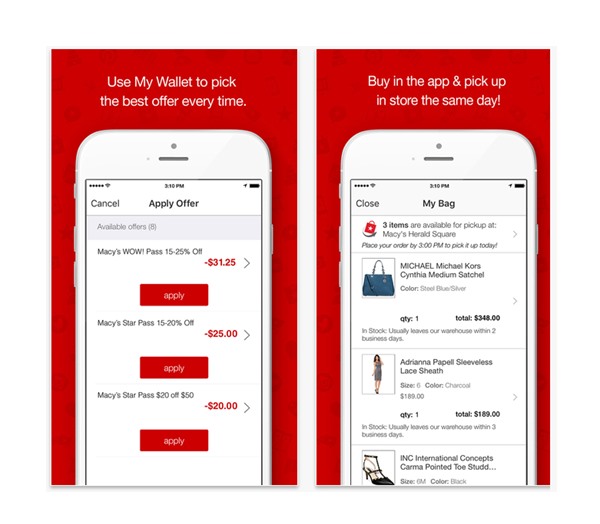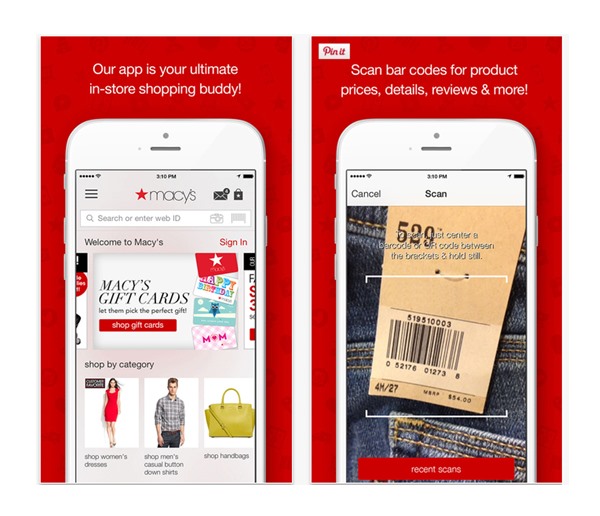Is Macy's Guiding The Future of Retail?
The past 15 years have seen a revolution in the amount of customer touchpoints that retailers can, and do, exploit. Whereas once upon a time the only option for many companies was to embrace a single channel approach, throwing all efforts into the in-store shopping experience alone, over the years the truly successful retailers have steadily emerged as those that have embraced multichannel, cross-channel, and now, finally, omnichannel experiences.
The digital, and, specifically, the smartphone revolution has led the charge. More than simply passively connected devices, the smartphone is now the device of choice – acting more like a personal assistant than a research tool – for the 2016 shopper, whether in-store or out. Indeed, Think With Google reports that 71% of shoppers who use their smartphone for research whilst in-store say that these devices have become an important part of the shopping experience.
But it’s not just research. Increasingly, customers are expecting to be able to complete all phases of the shopping cycle using whichever device they have to hand, either in-store or at home, and indeed either in-person or online.
The most sophisticated retailers are facilitating this, with their ongoing strategies geared increasingly towards enabling customers to convert via any channel. And this is simply because the most valuable customers are those that buy both in-store and online. Indeed, according to an IDC study in 2015, this kind of customer has a 30% higher lifetime value than those that only use one channel for all of their shopping activities.
Macy’s Deliver For Their Customers
One department store that’s carrying the flame for the omnichannel customer is Macy’s. With its core target group of middle-class women between the ages of 16 and 34, Macy’s quality products at reasonable prices attract a clientele of largely busy people – either engaged at work or out enjoying the social scenes with friends.
President at Macy’s Terry Lundgren describes this group as being smart and sophisticated, active on social media, and smartphone-savvy. He wants the Macy’s customer to be able to engage and purchase from the store however they want to, and is committed to enabling this.
“We want that a customer is able to interact with Macy’s no matter where she is or how she shops,” says Lundgren. “It makes no difference to us whether she buys something in our store or online, or whether she is shopping from her desktop computer or her Android Phone or iPad.
“We have a whole series of strategies in place to drive our store customer to the web, and our online customers to the stores. We strive to have a 360-degree view of the customer.”
Is Macy’s The Future Of Retail?
In a blog post entitled ‘The Future Of Retail Looks Like Macy’s Not Amazon’ for L2 Daily, Scott Galloway begins with the assertion that Macy’s will prove to be the most successful retailer over the next 5 years.
He cites that the reason the omnichannel approach will, in the end, prove to be more successful than the likes of the purely digital, as historically offered by the likes of Amazon, is down to the convenience and organisation of purchase and pickup.

Research has shown that about two-thirds of all shopping trips today start online with customers researching the options at their desktops or on smartphones or tablets. Then, the customers often come into the store to touch, feel and try-on the merchandise they saw. Maybe they buy in the store. Or maybe they buy the item later while sitting at home in the evening – but around 50% of this process is non-existent with the Amazon model.
The “burden of being at home to receive packages”, as Galloway puts it, is the “Achilles heel” of Amazon and other purely online players, whilst physical retail stores like Macy’s are more equipped to deal with and deliver what the modern consumer wants – i.e. to be able to research at their convenience, try-on and touch items at their convenience, pay at their convenience, and pick up purchases at their convenience. The future is digital, in other words – but it’s in a store’s ability to merge the digital with the physical that will prove the most winning for customers.

Macy’s launched its click-and-collect program in 2013, which, combined with its digital wallet – accessible via the Macy’s app or over the web – that integrates the store’s loyalty program, special offers and the various payment options available all in one place, has proved to be one of the most popular amongst customers. Indeed, the Macy’s app allows shoppers to check local availability, reviews and inventories, and then items can be ordered and delivered at home or in-store. Alternatively, in-store shoppers can opt to have items shipped to their homes, negating the inconvenience of transit if they so wish.
All told, Macy’s is a strategy that all retailers should be taking heed of. At its core is the customer-first approach – that is understanding who their customers are and delivering omnichannel experiences to them – followed by ensuring that customers’ needs and wishes are facilitated every step of the way through the shopping cycle. Combining mobile, online and in-store experiences provides the backbone, and multiple interaction points completes the mission.
About John Waldron: John Waldron is a technology and business writer for markITwrite digital content agency, based in Cornwall, UK. He writes regularly across all aspects of marketing and tech, including SEO, social media, FinTech, IoT, apps and software development.
